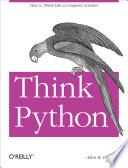
Getting Started with Dwarf Fortress
Learn to play the most complex video game ever made
Dwarf Fortress may be the most complex video game ever made, but all that detail makes for fascinating game play, as various elements collide in interesting and challenging ways. The trick is getting started. In this guide, Fortress geek Peter Tyson takes you through the basics of this menacing realm, and helps you overcome the formidable learning curve. The book’s focus is the game’s simulation mode, in which you’re tasked with building a dwarf city. Once you learn how to establish and maintain your very first fortress, you can consult the more advanced chapters on resource management and training a dwarf military. You’ll soon have stories to share from your interactions with the Dwarf Fortress universe. Create your own world, then locate a site for an underground fortress Equip your party of dwarves and have them build workshops and rooms Produce a healthy food supply so your dwarves won’t starve (or go insane) Retain control over a fortress and dozens of dwarves, their children, and their pets Expand your fortress with fortifications, stairs, bridges, and subterranean halls Construct fantastic traps, machines, and weapons of mass destruction
- ISBN 13 : 1449339816
- ISBN 10 : 9781449339814
- Judul : Getting Started with Dwarf Fortress
- Sub Judul : Learn to play the most complex video game ever made
- Pengarang : Peter Tyson,
- Kategori : Games
- Penerbit : "O'Reilly Media, Inc."
- Bahasa : en
- Tahun : 2012
- Halaman : 248
- Halaman : 248
- Google Book : http://books.google.co.id/books?id=9NthB1geq2sC&dq=inpublisher:O'Reilly&hl=&source=gbs_api
-
Ketersediaan :
The trick is getting started. In this guide, Fortress geek Peter Tyson takes you through the basics of this menacing realm, and helps you overcome the formidable learning curve.









